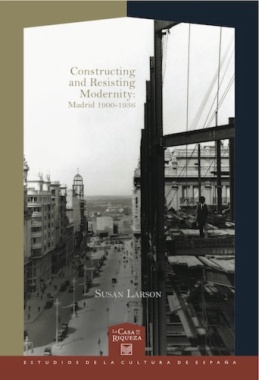This book studies the urban spaces imagined by the technocrats who had the power to shape Madrid between 1900 and 1936 and relates them to the fiction of authors who responded by creating utopian and dystopian narratives.
- Cover
- Title page
- Copyright page
- Table of Contents
- Chapter I. Modern Madrid as Force and Form
- Metropolis and Madrid
- What is Spanish Modernity?
- The Urban Process
- The Urbanization of Consciousness
- Charting the Relationship between Urban Conflict and Written Form
- Chapter II. Building Modern Madrid
- Madrid as Metropolis
- The First Attempts to Plan the Modern City
- Madrid’s Urban Planning, 1900 – 1936
- “Without a Style”: Madrid’s Modern Architectures
- Chapter III. Entering Modernity with Carmen de Burgos
- The ‘Nueva Mujer Moderna’ Enters the Public
Sphere
- Madrid 1900 – 1930: The Other Side of the City
- ‘La Nueva Literatura’ and Mass Culture in Modern
Madrid
- Negotiating the Street in La rampa
- The Place of Art and Commerce in Los negociantes
de la Puerta del Sol and El veneno del arte
- Chapter IV.
José Díaz Fernández’s La Venus mecánica: Modern Fashion and Gendered Spaces
- Women as Icons of Modernity in 1920s Madrid
- Díaz Fernández and El nuevo romanticismo
- La Venus mecánica
- Gendered Redefinitions of Urban Space
- Chapter V. Madrid Goes to Hollywood: Andrés Carranque de Ríos’s Cinematógrafo
- Film and the Urbanization of Consciousness
- Madrid’s Unique Film History
- Visualizing Spatial Boundaries in Cinematógrafo
- Conclusions
- Works Cited
- Index
- List of Illustrations

